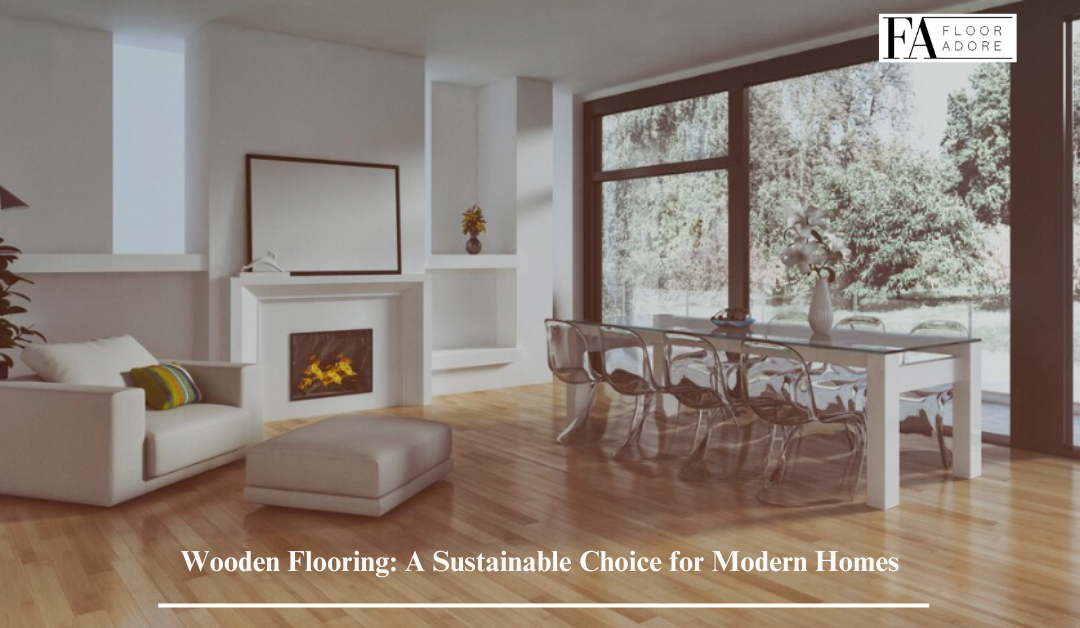Wooden flooring offers a range of environmental benefits that make it an attractive option for eco-conscious homeowners. Unlike synthetic flooring materials such as vinyl or laminate, which are derived from fossil fuels and require extensive energy to manufacture, wooden flooring is made from a renewable and biodegradable resource: wood. By choosing wooden flooring, homeowners can reduce their reliance on non-renewable resources and minimize their carbon footprint.
- Renewable Resource: Sustainably Managed Forests
One of the key reasons why wooden flooring is considered sustainable is its reliance on sustainably managed forests for raw materials. Responsible forestry practices, such as those certified by organizations like the Forest Stewardship Council (FSC), ensure that wood is harvested in a manner that promotes forest health, biodiversity, and the rights of indigenous communities. By supporting sustainably managed forests, homeowners can contribute to the preservation of natural ecosystems and the long-term viability of the timber industry.
- Carbon Sequestration and Storage
Wooden flooring has the unique ability to sequester and store carbon dioxide (CO2) from the atmosphere, helping to mitigate climate change. Trees absorb CO2 during photosynthesis and store it in their wood, effectively locking it away for the duration of their lifespan. By using wood products such as flooring, homeowners can continue to store carbon in their homes, effectively reducing their overall carbon footprint. Additionally, wood products continue to store carbon even after they are harvested and processed, making wooden flooring a carbon-neutral or even carbon-negative choice.
- Eco-Friendly Manufacturing Processes
The manufacturing processes involved in producing wooden flooring have also become increasingly eco-friendly in recent years. Many manufacturers have adopted sustainable practices to reduce waste, energy consumption, and emissions throughout the production chain. This includes using energy-efficient machinery, recycling wood waste for other purposes such as biomass energy or mulch, and implementing water-based finishes and adhesives that minimize volatile organic compound (VOC) emissions.
- Longevity and Durability
Another aspect of wooden flooring’s sustainability is its longevity and durability. High-quality engineered wood flooring, properly installed and maintained, can last for decades or even centuries, outlasting many synthetic flooring materials. This longevity reduces the need for frequent replacement and disposal of flooring materials, thereby reducing waste and conserving resources over the long term. Additionally, wooden flooring can be refinished multiple times to refresh its appearance and extend its lifespan, further enhancing its sustainability.
- End-of-Life Considerations
When wooden flooring reaches the end of its life cycle, it can be recycled or repurposed in various ways, minimizing its environmental impact. Wood flooring can be reclaimed and used in other construction projects, furniture making or as fuel for biomass energy. Additionally, wood is biodegradable, meaning it can naturally decompose without releasing harmful chemicals or pollutants into the environment. By choosing wooden flooring, homeowners can ensure that their flooring materials have a minimal impact on the environment, even at the end of their lifespan.
Conclusion:
In conclusion, wooden flooring offers numerous environmental benefits that make it a sustainable choice for modern homes. From its reliance on renewable resources and responsible forestry practices to its carbon sequestration capabilities and eco-friendly manufacturing processes, wooden flooring embodies the principles of sustainability at every stage of its lifecycle. By choosing wooden flooring, homeowners can not only enhance the beauty and comfort of their homes but also contribute to a healthier planet for future generations.





